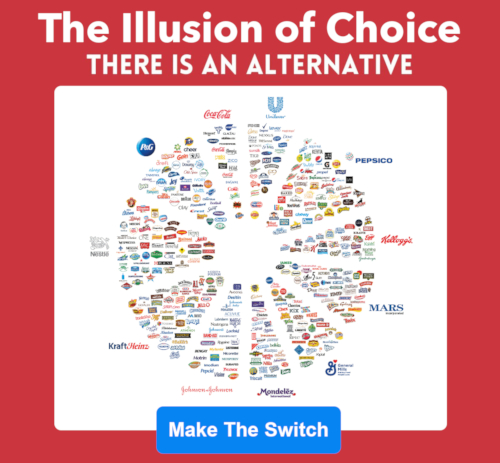The COVID crisis has been a marvel of how far society will go to act like it has control. After enduring a year of mixed messages from two presidential administrations, the American people are at a crossroads. On one hand, we can give in to the panic mentality that spawned the COVID crisis, poorly planned implementation, and sycophantic worship of failed social servants. On the other hand, we can embrace the freedom on which this nation was built. Either way, the American people have a choice, and how we deal with this choice will define our nation for years to come.
The Issue
The gross incompetence of the COVID reaction places the NIH and the CDC squarely in the same ranks of competence as the villain from Harry Potter who could not conquer a high school and the genius who scheduled Dan Quayle to judge a spelling bee. Nearly every message over the course of the last year has been mixed. “Do not wear masks, wait… wear masks.” “The virus can travel 27 feet, we mean 6 feet, we mean 3 feet.” “Hydroxychloroquine will help the disease, wait no it won’t, wait, yes it will.” And the most recent exposed mistake/lie, “Vaccines are needed even for those who have had the disease – oh wait, after 10 months, people who had the disease have a higher S and N protein rate than those who got the vaccine.”
People should trust their medical professionals. The problem that we are seeing is the media’s insistence that we believe all medical professionals. People need information to make educated decisions. The problem we are facing revolves around the fact that so much information has been withheld from the people. Data that supports the media narrative is broadcast widely; data that helps people make choices against the narrative is suppressed. This relationship is not the sign of a free nation.
Laughable Miscarriage of Justice
One of the biggest hypocrisies of the COVID crisis revolved around sports. Billions of people globally were told they could not be around strangers or co-workers. Some were even told they could not be around family. However, when it came time for a sport season to start, these rules were thrown out the window. Tens of thousands of small business and people living paycheck to paycheck were crushed under the foot of the government. Then we saw special rules opened up for athletes and celebrities, because they were suffering under the COVID rules.
First off, why do we give a damn about athletes and celebrities? I like watching sports as much as the next guy, but these are among the least essential workers in the country. Likely, they fall right after politicians. But they were some of the first businesses to be reinstated. Why? Because sports and movies keep the masses subdued. Once Marx called religion the opiate of the masses; now we know that it is fiction and sports.
The media paraded athletes and celebrities in front of us showing us how to be “good citizens.” First, their handlers showed them getting COVID tests so people would follow suit. The problem here was that athletes and celebrities were getting tested before ill people and medical staff. Next, we saw them jump on the train to get vaccinated. Once again, the media heralded them as heroes even though nurses, teachers, and essential workers were unable to get the jab.
The media and Washington knew that if people were watching movies and sports, they would spend less time watching the incompetence of the first and fourth estates. How many mask protests have you heard about since baseball started? How many “open up rallies” have been major news since studies sent their movies straight to cable? Where did the people’s passion for freedom go? Did we trade if for foam fingers in our living room and large popcorn in bed?
Hilarity in Tragedy
If you read the series on cruising last year, you know that cruise ships have some of the best records for dealing with disease. After the swine flu outbreak, cruise companies led the way in ensuring that customers had a safe experience while onboard. With the exception of two ships that had outbreaks (both in the Asian market), the incidence of COVID on ships was actually less than 10% of the incidence of COVID in the general population. Why? Because cruise ships followed the Surgeon General’s advice rather than kowtowing to the CDC. Wash your hands and wear your mask became policy on cruises, and when it was followed, very few people got sick (not just COVID, but other diseases as well).
The hilarity here is that while the cruise industry – which hires hundreds of thousands of workers and has millions of workers in ancillary industries – is a target for the CDC. Why they hate cruise ships, we may never know. But what we do know is that the “science” they use does not line up with the real studies. Cruise lines have shown time and time again that they are among the safest places in the world in relation to disease. However, the CDC has listed Draconian guidelines against cruise ship reopening, but allows stadiums to reopen fully. Let’s compare the two.
The Symphony of the Seas (a modern cruise ship) is 1,188 feet long with a width of 215 feet, giving each main deck a space 255,420 square feet. The “Big House,” the largest stadium in the United States, is just over 15 acres, which is 653,400 square feet. Comparatively, it would seem that the Big House has more room, until you remember that the Symphony of the Seas has 15 decks, increasing the square footage to approximately 3,831,300, nearly 7 times as much space as the stadium. Right now, the Symphony of the seas has a restriction on how many and how the cruise can be set up, while the Big 10 is announcing stadiums at full capacity.
One of the first arguments against this point is that the stadiums are open to the air, and the cruise ships are not. This is reasonable. However, we must address that only 2/3rds of the stadiums square footage is “open air,” which means approximately 392,040 square feet. Meanwhile, the ship has 2.5 decks that are mostly open air, and nearly 2 miles of deck and balcony that are open. This would be approximately 800,000 square feet, or double the open air area of the stadium, meaning the “outside” argument works better for the cruise ship than the stadium.
Time with other people is also a big argument against cruise ship. On a cruise ship, whether in the casino, at dinner, or at one of the venues, the average time a person spends in one location varies between 30 minutes and an hour. Even the main theater, where people go for shows, averages just over an hour for “staying time.” Meanwhile, in a stadium, people are generally in close quarters for about four hours, with small breaks into closer quarters to wait in line for refreshments and/or the bathroom.
Speaking of refreshments, the food service standards for a cruise are substantially higher than in a stadium. While there are the odd vendors selling drinks on a cruise, you do not have eight people pass your purchase to you down your row. Food and drink are delivered by the waiter to you. Even at the buffet, employees now load your plate cafeteria style so people are not “picking through the food.” In the main dining room and the specialty restaurants, the food would be like any land based fine restaurant. Meanwhile, in the stadium you get the nachos from the pot that’s been their since before the league was integrated and hotdogs that have been rolling since they were still called “frankfurters.”
That brings us to the people. The Big House in Michigan holds 107,601 people, plus all the employees. Meanwhile, the Symphony of the Seas holds 9,000 passengers plus the employees. The stadium has about three times as many people working there as the ship does, for those counting. This means that on the ship, each person has 425 square feet per person, or a very small apartment. At the stadium, each person has 6 square feet (6.072434 or those of you who are technical). This would equate to the closet in that small apartment. This means that while you can find space for yourself on the cruise ship, in the stadium the most free space you get is in the toilet stall.
Response
The cruise industry is an industry relied upon by millions of people in cities such as New York, Cape Liberty, Charleston, Port Canaveral, Ft. Lauderdale, Miami, San Juan, Tampa, Mobile, Galveston, LA, Seattle and Anchorage. Millions of people work at the hotels, airports, and eateries that support the industry. We shouldn’t shut down the sports, we should open up the cruises. If stadiums are safe, then so are the cruise ships.
If you have ever been to a stadium, you know you are going to find a sticky seat and gum stuck all over the place. In a cruise ship, this is not the case. Teams of people work day and night to keep the ship clean and safe for the passengers. We need to follow Florida’s example and ask the CDC why they are allowing panic to guide their actions rather than a real analysis of the records of the industry.
The cruise industry had its run in with the swine flu. It is unlikely that they will allow for a similar failure with the COVID, now that we know it is here.
- Game Review: Legacy at Sea by DPH Games - May 6, 2024
- Ace Magic Press Release - March 3, 2024
- Outdoor Game Review: Defenders Expansion for Capture the Flag Redux - March 3, 2024
JOIN US @NewRightNetwork on our Telegram, Twitter, Facebook Page and Groups, and other social media for instant news updates!
New Right Network depends on your support as a patriot-ran American news network. Donate now


